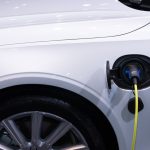Teen’s Invention Could Change The Electric Car Industry
The electric car industry is continuing to blossom, with growing sales across the globe. While business is expanding, researchers are trying to find out how electric car technology can become even more environmentally friendly. One engineer from Florida thinks he may have discovered a breakthrough. What is even more impressive is the fact that he is just 17 years old.
The Teen’s Impressive Invention
Robert Sansone says the idea to work on electric cars came to him after he saw a video describing their need for rare earth magnets that could cost hundreds of dollars per pound. This includes high-demand materials like samarium, dysprosium, and neodymium.
Sansone, who had already received praise for his innovations with go-karts and animatronics, realized synchronous reluctance motors don’t use rare earth materials. But while they are more environmentally friendly, these motors are not strong enough to power an electric car and are often found in objects like fans and pumps instead. Regardless, Sansone was determined to create a similar motor that was capable of harvesting more power. After working for a year, Sansone finished his prototype made of copper wires, 3D printer plastic, and a steel rotor.
How The Motor Works
Normal EV engines run when magnets are attached to a spinning rotor, which produces a magnetic field that is attached to nearby opposite poles, spinning the motor. Sansone’s motor, however, produces torque due to the difference in magnetism between the air gaps in the rotor and steel. He also created an entirely different magnetic field for additional torque but has not released any details due to a potential patent.
Sansone made several scaled-back variations of his engine on his 3D printer before he was able to test the 15th motor. Throughout the process, he ran the device in a way that resembled a traditional synchronous reluctance motor. The design showed 39% more torque and was 31% more efficient when run at 300 revolutions per minute. When the motor ran at 750 RPM, its efficiency increased by 37%.
While those numbers are far off from a Tesla motor, which runs at 18,000 RPM, Sansone is working on a larger version of the engine so he can test it with more RPMs in the future. Researchers say production of the motors could be difficult because of manufacturing costs, but say those concerns could be wiped away as 3D printers become more common.
Sansone says he might contact car companies once he completes the next round of testing.
Shop With Apex Magnets
If you want to conduct your own experiments with magnets (with parental supervision for children), then explore our wide range of magnets here at Apex. Or to read more about magnets and their uses, subscribe to our newsletter to stay up to date.

